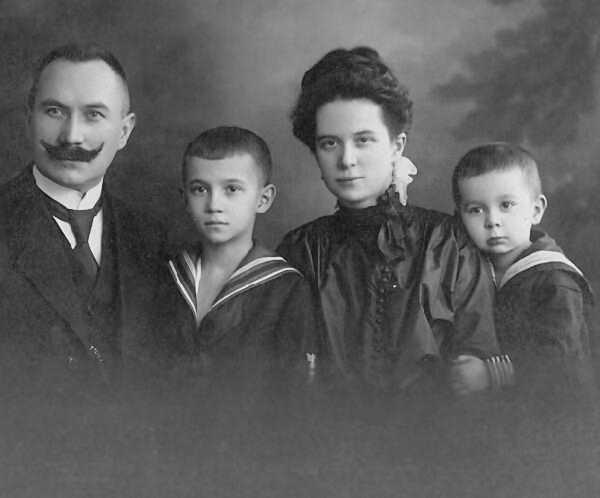
Figure 1.--HBC believes that this is a portrait of a German family taken about 1905. Notice how both boys are dressed in sailor suits, although there are small differences from the uniforms actually worn by the Imperial Navy.

The sailor suit today appears to us as an innocuous outfit for small boys, completely devoid of military or political significance. This was decidely not the case in the 19th and early 20th century. The style was first conceived by Queen Victoria (or more likely Prince Albert) as a way of popularizing the monarchy by wraping it in the most popular British institution--the Royal Navy. The popularity of the sailor suit was fueled by the naval arms race in the late 19th and early 20th century. At the time, the battleship was the super weapon of the era. No country was considered a major power without a flotilla of battleships. Thus the navies of the world achieved great national prestige--in part explaining why the sailor suit proved so popular with both parents and boys.
The sailor suit today appears to us as an innocuous outfit. It is now rarely worn by boys, except for a few specialized outfits such as ring bearers, sea scouts, and choirs. Generally only very young boys are still dressed in sailor suits. The outfit is completely devoid of military, national, or political significance. This was decidely not the case in the 19th and early 20th century.
The style was first conceived by Queen Victoria (or more likely Prince Albert) as a way of popularizing the monarchy by wraping it in the most popular British institution--the Royal Navy. Actually HBC has not yet found any information on just who actually conceived of the idea. It was an enormously successful political decession. The image of the the young princes in sailor suits, esoecially the uniforms of enlisted men, was one of a varriety of steps which helped restore the popularity of the monarchy in Britain. Republicanism which grew greatly in strength on the continent, made little headway in Britain. The adoption of the sailor suit by the British royals had a significant impact on boys' wear. Boys throughout Europe and America began wearing the sailor suit. It was not until the 1890s and the intensification of the naval arms race, however, that the sailor suit became the premeinent boys' style.
The popularity of the sailor suit was fueled by the naval arms race in the late 19th and early 20th century. Modern navies and the bnattleship in particular were seen as emblemns of national pride and prestige. The sailor suit had been made an acceptable boys' out fit by Queen Victoria. The growing prestige of national navies in the 1890s made the sailor suit the most popular boys' garment, a garment unlike some other garments, was popular with both parents and boys.
At the time, the battleship was the super weapon of the era. It was the most expensive weapon of war ever conceived. No country by the 1890s was considered a major power without a flotilla of battleships. While not really the case, this view was widely held an accepted by most European leaders at the turn of the century. Thus the navies of the world achieved great national prestige--in part explaining why the sailor suit proved so popular with both parents and boys. In the 1890s virtually every boy in Europe and America would wear a sailor suit.
Crown Prince Wilhelm rose to the throne in 1888 as Wilhelm II. The Kaiser while a student of history, in fact learned nothing from it and proceeded to persue one of the most disastrous foreign policies ever persued by a modern European nation. The new German Kaiser in 1888, who from childhood, undoubtedly influenced by his visits to England with his mother, where he saw the powerful English naval vessels. Young Prince Wilhelm understandablyh developed an interest in the navy. Interestingly an American friend, Poulteney Bigelow, son of te American Ambassador, remembers sailing a toy boat with Princes Wilhem and Henry. Some say this was the nbirth of thre German Navy. Wilhelm's brother Henry was to become an admiral in the Imperial Navy. Influenced by naval planners like Admiral Tripitz, Wilhelm decided to build a navy that would rival the British Royal Navy. There was in fact little military need for Germany to have a strong navy. This decession ignored the fundamental precept of Chancellor Bismarck--isolate France. This more than any other factor changed the outllok of the British public from viewing Grmany as an ally to a potential foe. The result, was to put Britain on the French side when war came in August 1914. Unlike 1870, France did not have to fight the Gerrmans alone, but rather had Brtain and Russia on her side.
Given the importance of the sailor suit, HBC has developed detailed information on this garment and its various manifestations. Few boys' clothing styles have beenb as imortant or so widey worn as the sailor
suit. The sailor suit is certainly one of the classic styles for boys' clothing. Originally conceived in England, it soon became an internatiinally acepted style, easily criossing national obrders. The classic sailor suit has changed little over time, although the
pants worn with it have changed. While the classic style has changed little, there have been many variation on the classic style worn first by the British princes and subsequently by royals and commoners throughout Europe and America.
Navigate the Boys' Historical Clothing Web Site:
[Return to the Main political connotation page]
[Introduction]
[Activities]
[Bibliographies]
[Biographies]
[Chronology]
[Clothing styles]
[Countries]
[Literary]
[Contributions]
[FAQs]
[Glossaries]
[Satellite sites]
[Boys' Clothing Home]
